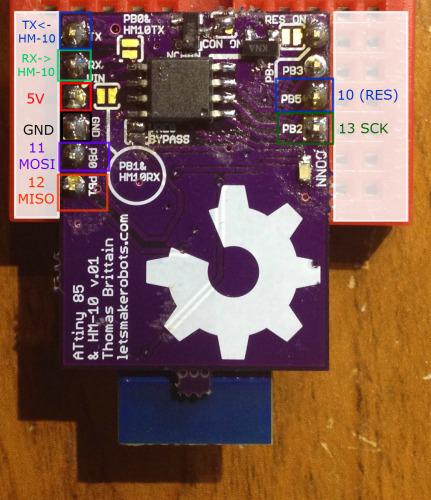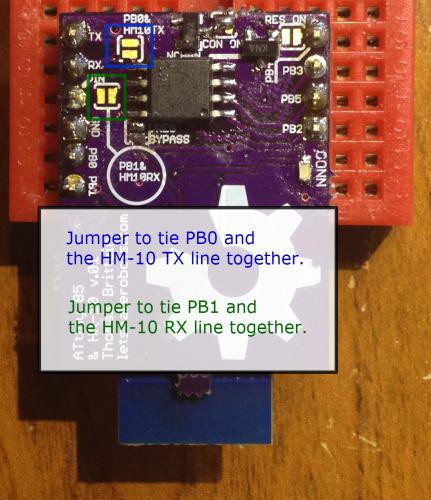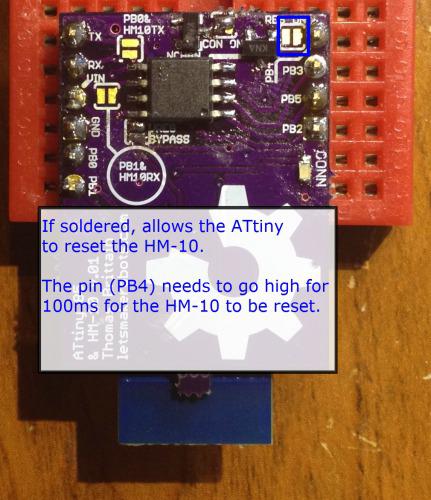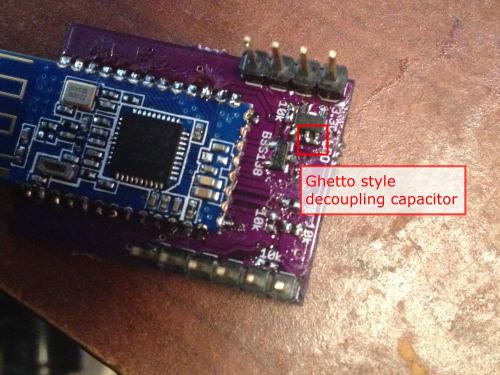This article is part of a series.
View all 17 parts
- Part 1 – The Hunter S. Thompson Board -- Arduino Mega Mini
- Part 2 – Make an ADXL345 Breakout Board
- Part 3 – Mega Mini Motor Shield (M^3)
- Part 4 – My Eagle PCB Walkthrough
- Part 5 – Populating and Programming and APM
- Part 6 – Incomplete Works
- Part 7 – HM-10
- Part 8 – Jot
- Part 9 – Homemade Pulse Sensor
- Part 10 – ATtiny Adventure -- I2C on ATtiny 84/85
- Part 11 – This Article
- Part 12 – Kobold
- Part 13 – Scarab
- Part 14 – The Valdez Mutant -- LPC1114 QFN
- Part 15 – Lab Controller PCB
- Part 16 – Lab Controller v05-09
- Part 17 – Robber Board
Originally posted on www.letsmakerobots.com
UPDATE: Added BOM corrections. (Sorry for floating.)
Ok. Here's a finished board I've been working on for a bit.
In essence, it is a BLE node board. It combines an HM-10 board with an ATtiny 85. This board builds off:
The idea of the Bitsy Spider board is diminutive controller node. I wanted it to be cheap and versatile enough to use as a node, but I think the final price is around $11 each.
Here's the ole GitHub:
- ATtiny Bitsy Spider (v.02)
The BOM:
- OSHPark Board : $1.68 each ($5.05 minimum).
- 1 x 20k Resistor -- 0402: $.04
- 3 x 10k Resistor -- 0402: $.04
- 2 x 1uF 0402 $.20
- 3 x BSS138 : $.60
- 1 x ATtiny 85 -- SOIC: $.80
- 1 x HM-10 : $6.50
- 1 x 0603 LED $.11
- 1 x 3.3V LDO 300mA -- SOT-23-5 - Voltage Regulator: $.58
Total (approximate): $10.55
There are lots of solder-jumpers on this board, given it is meant to be versatile.
Here is the programming pinout to use an Arduino as ISP


PB0 <---> TX
** PB1 <---> RX**
This will allow you to test your code, without having to solder and unsolder. Then, after your code is perfectish, solder the jumpers marked "PB1 & HM10 RX" and "PB0 & HM10 TX," then embed the Bitsy Spider.

- Type: AT+PIO11
- Response: OK+PIO11
When done, the ATtiny 85 will only power-up if the HM-10 has a connection. Of course, the solder-jumper is meant to bypass this feature.

Here's a summary explanation; the HM-10 has a time out feature after it losses connection from one HM-10 that prevents it from connecting to another for approximately 10 seconds. So far, there is no option to bypass this "lost connection" time-out. But resetting the HM-10 (<150mS power-cycle) bypasses this time-out. I'll update more on this setup when I've completely tested it. If there are questions, I've written a lot in the comments of my original HM-10 post . But also feel fre to contact me.

One last thing I should mention.
I expect one major mistake and two minors on the first run of every board I send off. This board is no exception. I forgot the decoupling capacitors on the voltage regulator and the HM-10. I've added them on the v.02 board. Of course, this shouldn't be a major flaw, but with a capacitor on the voltage regulator it causes it to spit out 3.6v instead of 3.3v. Major problem. I saved this set of boards by soldering a 0402 1uF between the legs of the SOT-23-5 regulator. Not fancy, but saved $5.
